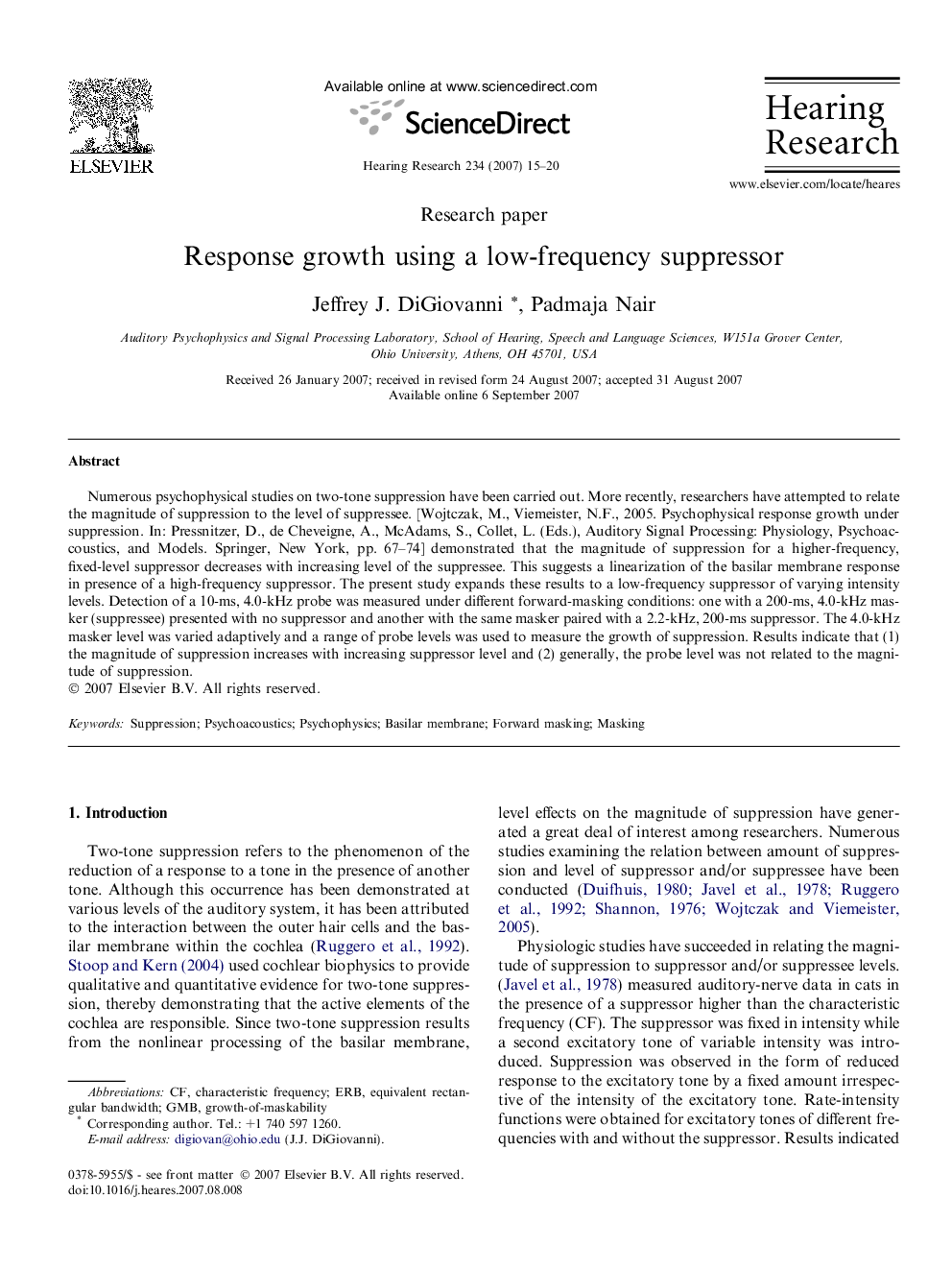| Article ID | Journal | Published Year | Pages | File Type |
|---|---|---|---|---|
| 4356193 | Hearing Research | 2007 | 6 Pages |
Numerous psychophysical studies on two-tone suppression have been carried out. More recently, researchers have attempted to relate the magnitude of suppression to the level of suppressee. [Wojtczak, M., Viemeister, N.F., 2005. Psychophysical response growth under suppression. In: Pressnitzer, D., de Cheveigne, A., McAdams, S., Collet, L. (Eds.), Auditory Signal Processing: Physiology, Psychoaccoustics, and Models. Springer, New York, pp. 67–74] demonstrated that the magnitude of suppression for a higher-frequency, fixed-level suppressor decreases with increasing level of the suppressee. This suggests a linearization of the basilar membrane response in presence of a high-frequency suppressor. The present study expands these results to a low-frequency suppressor of varying intensity levels. Detection of a 10-ms, 4.0-kHz probe was measured under different forward-masking conditions: one with a 200-ms, 4.0-kHz masker (suppressee) presented with no suppressor and another with the same masker paired with a 2.2-kHz, 200-ms suppressor. The 4.0-kHz masker level was varied adaptively and a range of probe levels was used to measure the growth of suppression. Results indicate that (1) the magnitude of suppression increases with increasing suppressor level and (2) generally, the probe level was not related to the magnitude of suppression.
